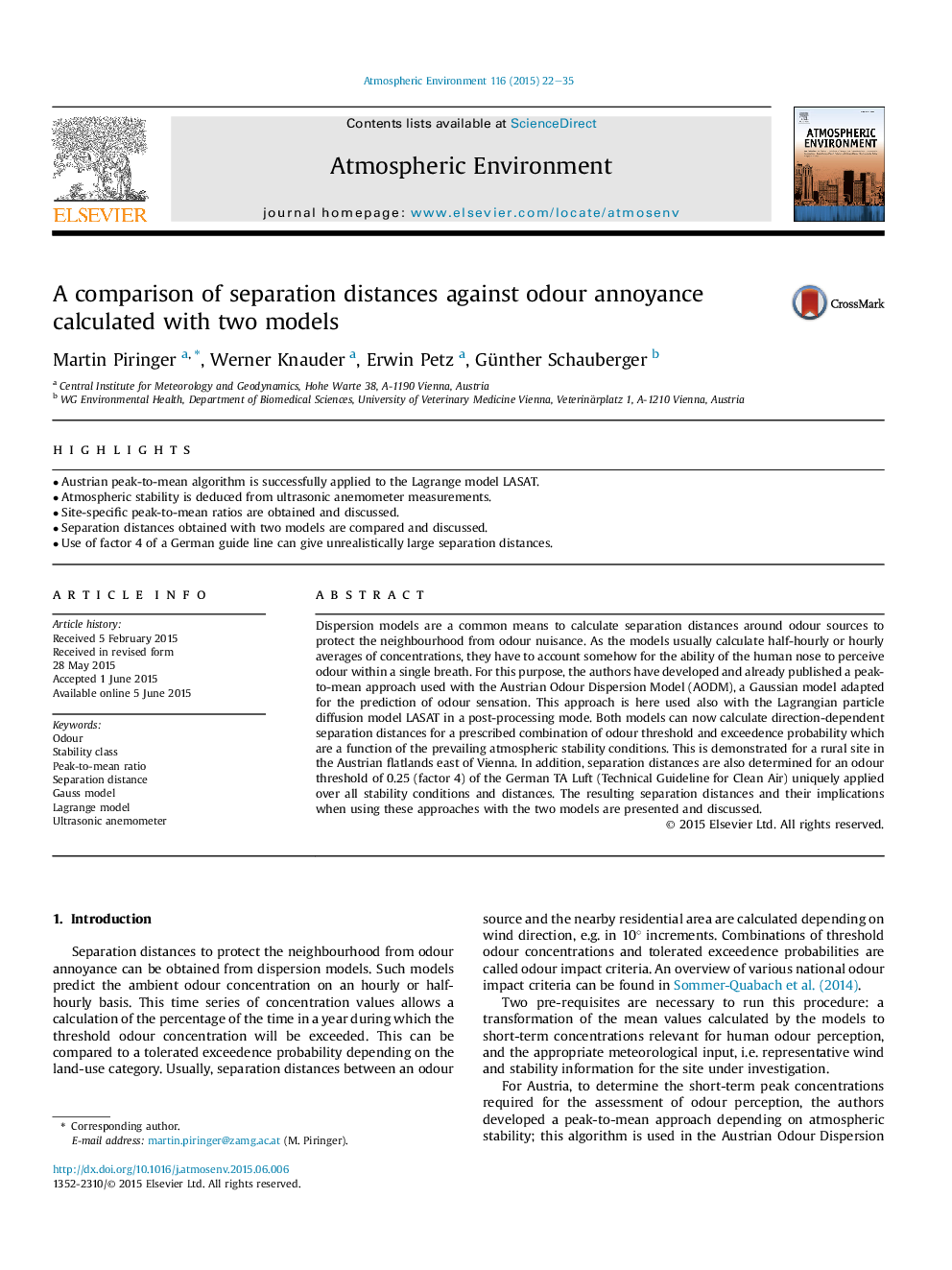| کد مقاله | کد نشریه | سال انتشار | مقاله انگلیسی | نسخه تمام متن |
|---|---|---|---|---|
| 4438112 | 1620355 | 2015 | 14 صفحه PDF | دانلود رایگان |
• Austrian peak-to-mean algorithm is successfully applied to the Lagrange model LASAT.
• Atmospheric stability is deduced from ultrasonic anemometer measurements.
• Site-specific peak-to-mean ratios are obtained and discussed.
• Separation distances obtained with two models are compared and discussed.
• Use of factor 4 of a German guide line can give unrealistically large separation distances.
Dispersion models are a common means to calculate separation distances around odour sources to protect the neighbourhood from odour nuisance. As the models usually calculate half-hourly or hourly averages of concentrations, they have to account somehow for the ability of the human nose to perceive odour within a single breath. For this purpose, the authors have developed and already published a peak-to-mean approach used with the Austrian Odour Dispersion Model (AODM), a Gaussian model adapted for the prediction of odour sensation. This approach is here used also with the Lagrangian particle diffusion model LASAT in a post-processing mode. Both models can now calculate direction-dependent separation distances for a prescribed combination of odour threshold and exceedence probability which are a function of the prevailing atmospheric stability conditions. This is demonstrated for a rural site in the Austrian flatlands east of Vienna. In addition, separation distances are also determined for an odour threshold of 0.25 (factor 4) of the German TA Luft (Technical Guideline for Clean Air) uniquely applied over all stability conditions and distances. The resulting separation distances and their implications when using these approaches with the two models are presented and discussed.
Journal: Atmospheric Environment - Volume 116, September 2015, Pages 22–35
